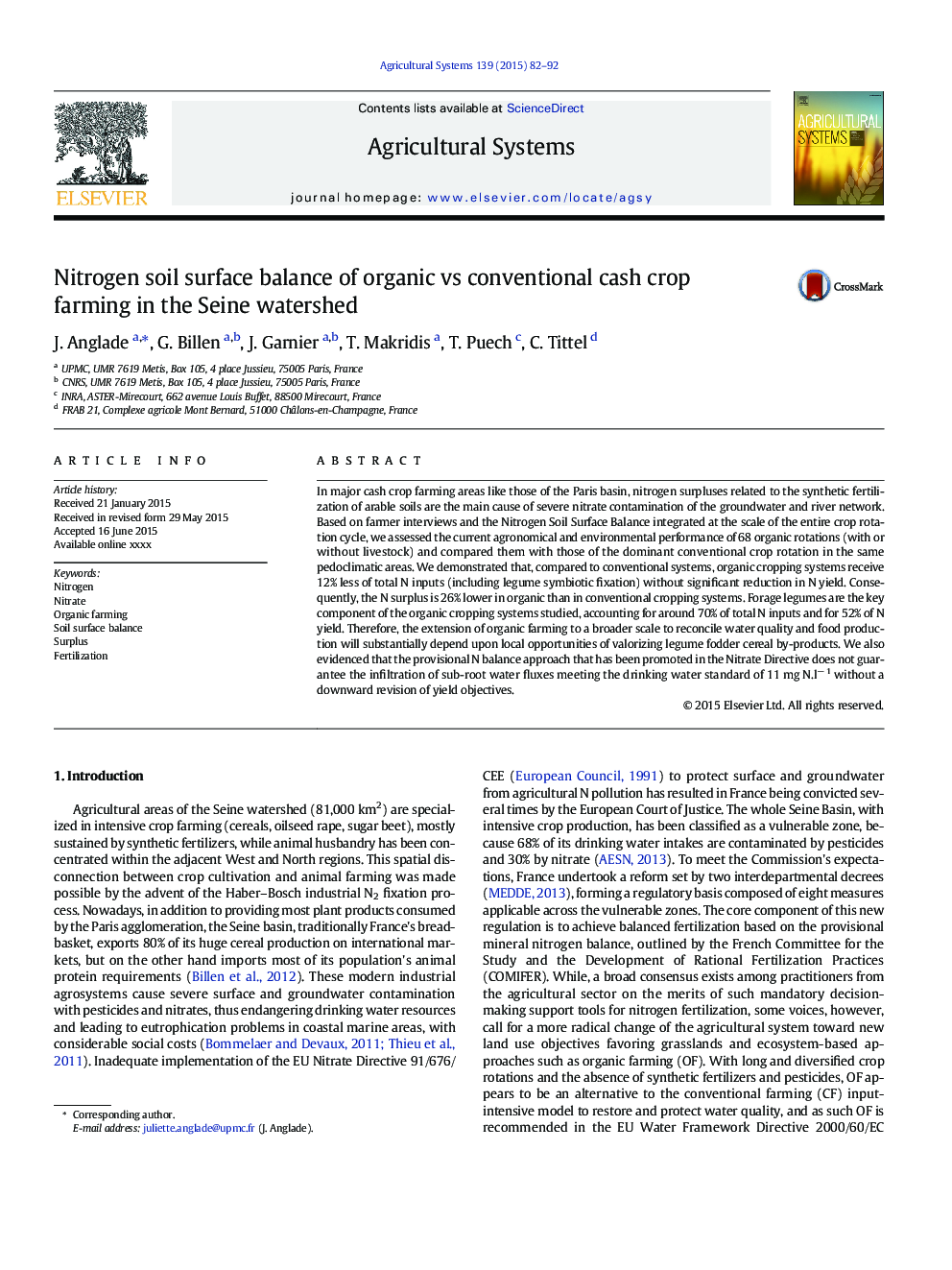| Article ID | Journal | Published Year | Pages | File Type |
|---|---|---|---|---|
| 6368467 | Agricultural Systems | 2015 | 11 Pages |
Abstract
In major cash crop farming areas like those of the Paris basin, nitrogen surpluses related to the synthetic fertilization of arable soils are the main cause of severe nitrate contamination of the groundwater and river network. Based on farmer interviews and the Nitrogen Soil Surface Balance integrated at the scale of the entire crop rotation cycle, we assessed the current agronomical and environmental performance of 68 organic rotations (with or without livestock) and compared them with those of the dominant conventional crop rotation in the same pedoclimatic areas. We demonstrated that, compared to conventional systems, organic cropping systems receive 12% less of total N inputs (including legume symbiotic fixation) without significant reduction in N yield. Consequently, the N surplus is 26% lower in organic than in conventional cropping systems. Forage legumes are the key component of the organic cropping systems studied, accounting for around 70% of total N inputs and for 52% of N yield. Therefore, the extension of organic farming to a broader scale to reconcile water quality and food production will substantially depend upon local opportunities of valorizing legume fodder cereal by-products. We also evidenced that the provisional N balance approach that has been promoted in the Nitrate Directive does not guarantee the infiltration of sub-root water fluxes meeting the drinking water standard of 11 mg N.lâ 1 without a downward revision of yield objectives.
Related Topics
Life Sciences
Agricultural and Biological Sciences
Agricultural and Biological Sciences (General)
Authors
J. Anglade, G. Billen, J. Garnier, T. Makridis, T. Puech, C. Tittel,
